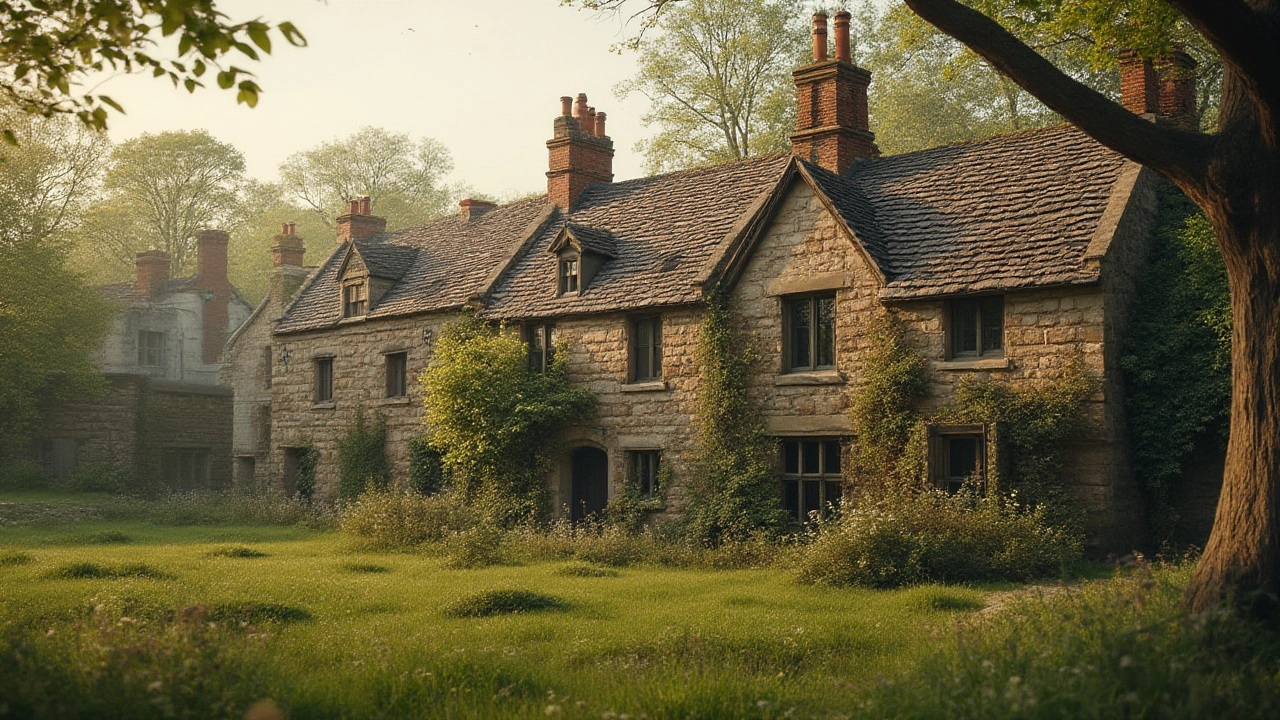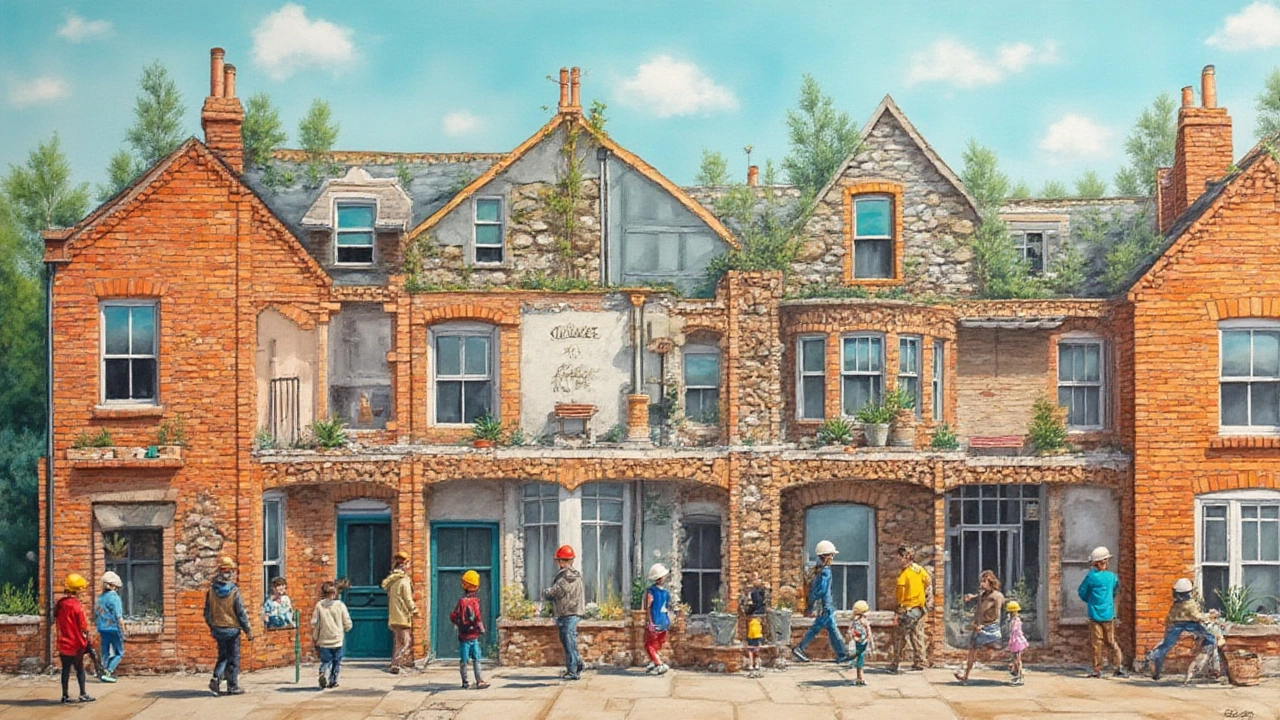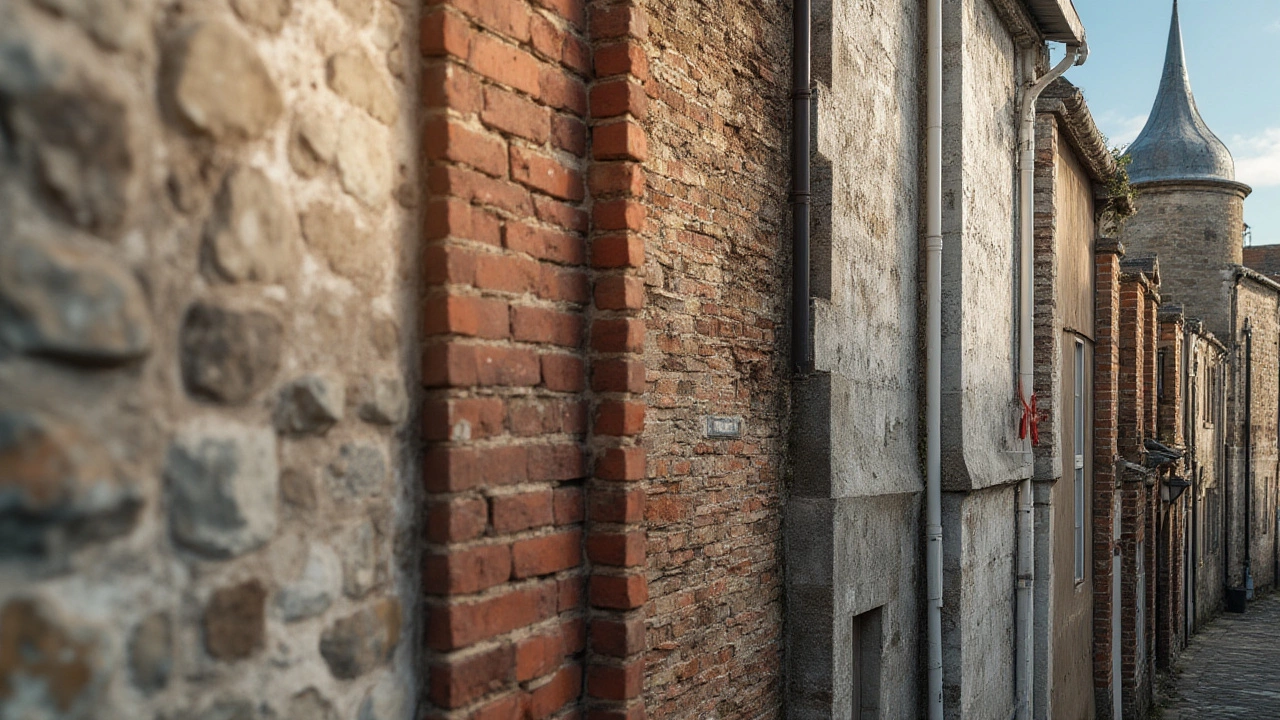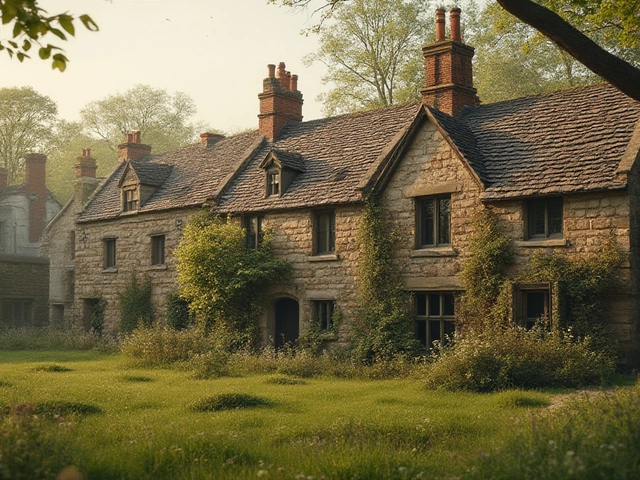Longest Lasting Materials for House Construction: Stone, Brick, Concrete, and Modern Solutions

Funny thing about houses: you can spend a mint on fancy cabinets and the latest paint color, but none of it matters if what’s holding your home together is crumbling beneath your feet. When people talk about “forever homes,” most are just hoping their kitchen doesn’t look old in a decade. But what if you want a house that will outlast not only you but maybe even another couple of centuries? That’s not as wild as it sounds. Let’s get gritty about which construction material really sticks around, who’s winning the endurance game, and what this means for your house in the long haul.
The Heavyweights: Stone and Brick in Human History
Want indestructible? Start by looking at what’s still standing after hundreds—even thousands—of years. Stone is the obvious legend. Just consider the Pyramids at Giza, the Great Wall of China, or stone cottages scattered across rural Europe. These aren’t just museum pieces. Some of those old stone houses in Scotland and France are still lived in today. We’re talking about homes built back when everyone wore tunics. Stone is hard, noncombustible, unaffected by pests, and doesn’t rot. If you have an earthquake or a major flood, stone might be battered, but it’s not washed away or chewed up. Of course, it has its quirks: it’s not cheap to mine, cut, or move, and building with it takes actual skill. In the modern world, you need skilled masons, and that’s not always easy to find.
Sneak up just a bit on the timeline and you’ve got brick. Fired clay bricks have been used for over 7,000 years. There’s a Roman bridge near Córdoba, Spain, built mainly from brick, still carrying traffic. The secret? Once brick is fired, it becomes super dense, resistant to water (as long as mortar’s in good shape), and can hold up heat, rain, cold, even bushfires. Those 19th-century brick terraces in central Auckland? Most are still going strong—with the original walls. Brick houses can laugh off pests, stay cool in summer (they take a long time to heat up), and last more than a century easily. The catch is always the mortar: if that fails or you let moisture sneak through, brick will eventually suffer.
Which one’s the winner? Honestly, both stone and brick can easily outlast a human lifespan by several multiples. If you want instant, intergenerational longevity, this is your classic, proven path. But beyond nostalgia and old-world charm, they also require upkeep. Mortar joints need maintenance. Skilled repairs aren’t automatic. But nobody’s going to walk past your stone or brick home two hundred years from now and think, “What a piece of junk.”
Concrete Champions: More Than Just Greige Boxes
If stone and brick are the grandads of durability, concrete is the resourceful cousin that’s nowadays pretty much everywhere. It’s actually been around for longer than people think. The Romans invented a basic version (Roman concrete structures are still standing, like the Pantheon), but the modern version—Portland cement-based mix—took off in the 19th century. Fast-forward, and you’ll find concrete high-rises, highways, bridges, water tanks—if it’s heavy and critical, it’s probably made of concrete. Now, for houses, concrete’s not typically used as basic blocks but as poured slabs, pre-cast panels, blocks, or even entire tilt-up walls.
Here’s the deal: properly mixed and cured concrete is incredibly strong. It resists water, fire, pests. It doesn’t rot. Reinforced with steel (rebar), it can deal with cracking and flexing. Concrete can last 100, 200, even 400 years if you protect the steel from water intrusion. Even in New Zealand, you’ll find early-1900s concrete homes (sometimes called “monolithic” or “solid poured”) still standing tall. Whole cities, like Wellington, rely on concrete buildings to survive quakes. Concrete’s one weak spot is its weathering when poorly poured or if water rusts the rebar inside. You don’t want water sneaking in, because rusting steel expands and blows apart the concrete over decades. Good design and waterproofing fix most of this risk.
| Material | Average Lifespan | Pest Resistant | Fireproof | Maintenance Level |
|---|---|---|---|---|
| Stone | 500+ years | Yes | Yes | Low |
| Brick | 100-500 years | Yes | Yes | Moderate (mortar) |
| Concrete | 100-400 years | Yes | Yes | Moderate |
| Timber (untreated) | 30-80 years | No | No | High |
| Modern steel frame | 75-200 years | Yes | Yes | Low |
So why not build everything with concrete? Cost and appearance are the biggies. Pouring a custom concrete house is pricey, and not everyone loves the vibe (some find it cold or “blocky”). If you’re after a slick, low-maintenance, extremely tough home, concrete’s a hard act to follow. Just get waterproofing and drainage done right especially if you live somewhere with heavy rainfall, like, say, most of the North Island.

Modern Materials: Steel, Engineered Timber, and Composites
People talk up stone, brick, and concrete for good reason, but not everyone wants to live in a house that feels like an old fortress. Technology’s given us new options, like steel framing, engineered woods, and advanced composites. Each has its own story and, frankly, none are as simple as the brochures claim.
Steel frames have taken off in New Zealand for modern housing—mainly because they’re light, super strong, resistant to pests, and fireproof. You won’t have to worry about termites or borer beetles eating steel. Galvanised steel, if kept dry, can last 100 years or more. But if steel framing is exposed to salt air (think coastal Auckland) or leaks, corrosion can set in. That’s why top-notch design and ventilation are musts. There’s also sound transfer—steel frames can be noisy without extra insulation or dampening. So, steel homes last, but the devil’s in the details.
Engineered timber, such as cross-laminated timber (CLT), glulam beams, or LVL (laminated veneer lumber), is another contender and takes timber to a new level. By gluing thin layers or strips together at varying angles, you get a material far stronger than standard wood, with less warping, better fire performance, and way lower environmental impact than concrete or steel. In a dry, well-protected building, engineered timber can last a century—some say more if carefully looked after. It’s also got a warm aesthetic, absorbs carbon, and goes up quickly. But: timber hates water. If it gets damp or is badly detailed, decay sets in fast, and New Zealand’s wet winters push builders to always double down on weatherproofing.
Composites and new synthetics? You’ll hear about fiber-cement panels, high-tech plastics, and glass-reinforced concrete for claddings and structure. Most are still too new for real longevity tests, but some 1970s prefab buildings using composites are still around, so there’s promise. The biggest catch is that “modern” often means “unproven past 50 years”—so go for brands with a track record and warranties that actually back up the paperwork.
Why Timber and Cheap Stuff Just Doesn’t Cut It for Longevity
Your grandad’s villa might look charming with sash windows and stained timber, but if you really want a house that lasts forever, regular timber’s out. It’s not that it can’t be lovely—it’s just that New Zealand’s rain, sun, and bugs are hard on classic wood. Rot, fungal attacks, borer, termites in the north, and just plain weathering do their work. Even the best weatherboards or hardwoods eventually break down, unless you go mad on painting and maintenance. Average regular timber homes in New Zealand last 30 to 80 years—maybe more if babied with ongoing care. You probably don’t want a home that needs a full repaint every decade or spends half its life under scaffolding.
Cheap, fast-to-build materials like basic plasterboard claddings, untreated pine framing, or fiber-cement sheets were part of the infamous “leaky building” crisis in New Zealand in the late 1990s and 2000s. Thousands of homes needed billions in repairs. The lesson? Short-term savings can mean long-term misery. No one’s talking about those places fifty years from now.
So, tip: If you’re choosing for longevity, think about not just the main wall but the whole assembly. That means a weather-resistant cladding, a tough frame, water-resistant membranes, and engineered systems that work together. And don't buy into the myth that a cheaper new material is up to the same standard as what's been standing on the planet for centuries—longevity loves time-tested solutions.

Tips for Choosing a Material to Outlast Everything Else
Reading this, you might start wishing you lived in a stone castle—but the real world’s about trade-offs. If you want a house that really lasts, here’s the inside scoop:
- longest lasting house material is usually stone, then brick, then high-quality concrete—but only when built right.
- Pick based on your local environment. Stone is unbeatable but heavy and slow to build with, and not all regions have good supplies. Brick’s easier, and more adaptable to different climates. Concrete handles storms, fire, and floods, but hates bad waterproofing.
- If using steel or engineered timber, make sure every part of the building (frame, cladding, roofing, flashing) is specified for your climate—especially if you’re near the ocean or in a damp place. Spend on the details.
- Double down on water management. Good drainage, great waterproofing, and ventilation are your three best friends in a long-lasting house. A hundred-year-old brick will fail if water is always soaking into the wall.
- Plan for light maintenance. Even stone and brick need mortar pointing every 30–50 years, and concrete may need occasional patching on cracks.
- Repair as soon as you spot problems. Tiny cracks? Fix them. Small leaks? Sort them. It’s always cheaper and easier before it becomes structural.
- If you’re hiring a builder, find someone with experience in the material you’re choosing. Bad workmanship kills even the sturdiest systems.
- Consider the wider system—your roof will probably need replacing at least once, windows and doors might go sooner. Don’t skimp on joinery or flashing details just because the wall itself is bulletproof.
And, if you’re thinking way outside the box—earthbag, cob, rammed earth—some alternative systems last a long time but can be high maintenance. There are houses in the Middle East made of mud-brick rammed earth which are still standing after 500 years, but that’s all about climate and culture. Not a slam dunk in New Zealand’s wet and windy conditions.
So, next time you’re staring at a frozen pizza in a damp rental and dreaming bigger, think about your legacy. Want a house even your great-great-grandkids would thank you for? Pick the material that’s proven it has what it takes, put the effort in up-front, and whenever you’ve got a choice, go for quality over the latest fad. At the end of the day, it’s tougher to beat stone, brick, and concrete—provided you build smart, and a dash of common sense is poured right into the foundation.
